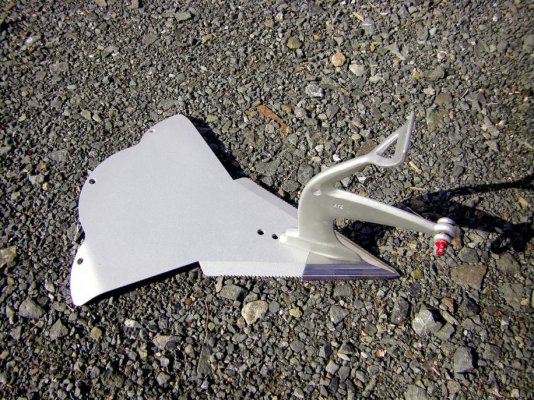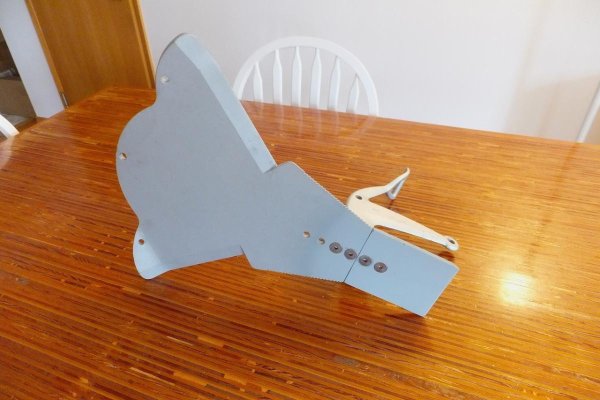Markpierce
If you want to trust your vessel to a mushroom anchor, be my guest. Why not just use a kellet (or an old car battery).
I had always imagined that mushroom anchors work (like my concrete block) by their resistance to movement (friction) and their ability to settle over a period of time.
So, yes, gravity is important if you have time, most of us move on (in terms of our anchor location) before time has much influence.
If you believe in gravity, for an anchor - then you will miss the benefits of the alloy Excel or alloy Spade, your loss.
If gravity was a factor, the oil rig anchors would be filled with lead, or uranium (for oil rigs anchors cost is not an issue). If gravity were important then anchors would be made from a thin film of steel and a lot of lead. If gravity were an issue then the Fortress would be as well engineered as it is and made from HT steel (with lead somewhere).
it is not about weight, but design and surface area.
If we could use Kryptonite then anchors would be made from paper thin Kt.
And carbon fibre, reinforced polymers lack abrasion resistance (been there, done that).
Jonathan
If you want to trust your vessel to a mushroom anchor, be my guest. Why not just use a kellet (or an old car battery).
I had always imagined that mushroom anchors work (like my concrete block) by their resistance to movement (friction) and their ability to settle over a period of time.
So, yes, gravity is important if you have time, most of us move on (in terms of our anchor location) before time has much influence.
If you believe in gravity, for an anchor - then you will miss the benefits of the alloy Excel or alloy Spade, your loss.
If gravity was a factor, the oil rig anchors would be filled with lead, or uranium (for oil rigs anchors cost is not an issue). If gravity were important then anchors would be made from a thin film of steel and a lot of lead. If gravity were an issue then the Fortress would be as well engineered as it is and made from HT steel (with lead somewhere).
it is not about weight, but design and surface area.
If we could use Kryptonite then anchors would be made from paper thin Kt.
And carbon fibre, reinforced polymers lack abrasion resistance (been there, done that).
Jonathan






